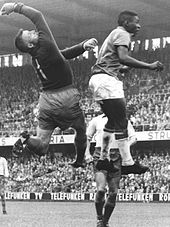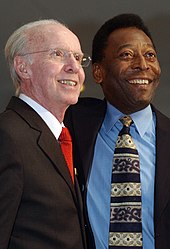PAIN-CAPABLE UNBORN CHILD PROTECTION ACT, S.1922
Oct. 3, 2017, Update: Victory - The U.S. House of Representatives passed H.R. 36, the Pain-Capable Unborn Child Protection Act, by a vote of 237-189.
Please sign and keep sharing as the bill moves to the Senate.
http://citizengo.org/en-us/98252-pass-pro-life-pain-capable-unborn-child-protection-act?tc=fb&tcid=42251021
"The United States is one of seven countries in the world that allows the inhumane practice of abortion post 20 weeks. Though all abortion is inhumane and wrong.
Sadly, starting at 20 weeks, if not sooner, it's proven that unborn babies can feel pain as they die. With pro-life majorities in the House and Senate, now is the time to act. Sign our petition to support the passage of the Pain-Capable Unborn Child Protection Act (H.R. 36).
Tell Congress it’s time to pass laws that save the lives of unborn children and protect vulnerable women.
H.R. 36 was introduced in the US House of Representatives on January 3, 2017 by sponsor Representative Trent Franks, including 182 cosponsors and bipartisan support. This pro-life measure intends to ban abortion (in most cases) from after 20-weeks of pregnancy up to the day of birth.
The bill indicates there is substantial evidence that an unborn child is capable of experiencing pain at least by 20 weeks after fertilization, if not earlier. In a report to the US Department of Justice, a leading expert in the field claims, “The pain perceived by a fetus is possibly more intense than that perceived by term newborn or older children.”
We need to stand with Representatives Franks and the 182 cosponsors as they act as the voice of the voiceless 18,000 healthy unborn babies that are aborted late-term each year. According to Representative Franks, “Many of them cry and scream as they die, but because it is amniotic fluid going over their vocal cords instead of air, we don’t hear them.”
Upon passing in the House of Representatives, we expect Senate Majority Leader Mitch McConnell to bring it to the Senate floor for a vote. President Trump has promised to sign the bill if placed on his desk.
With your help -- we can end this inhumane and intolerable act of brutality against defenseless human beings. Please sign our petition and share with your friends.
A study published in the journal Pain: Clinical Updates argues that unborn babies under 20 weeks do in fact appear to feel pain in the same way that a newborn baby feels pain.
“Multiple lines of evidence thus corroborate that the key mechanisms of consciousness or conscious sensory perception are not dependent on cortical activity. Consistent with this evidence, the responses to noxious stimulation of children with hydranencephaly are purposeful, coordinated, and similar to those of intact children.”
A more recent study by the researchers at the department of anesthesiology at the University Hospitals in Gasthuisberg, Belgium, further confirmed this finding: that the cortex is not necessary for an unborn baby to experience pain.
A neurologist at the University of Toronto, Dr. Paul Ranalli argues that because of their early stage of development, "unborn babies probably feel pain more intensely than adults.”
Dr. David Birnbach, a pro-choice doctor and president of the Society of Obsteric Anesthesia said that during fetal surgeries, “we need to administer anesthesia directly to the fetus, because even at these early gestational ages the fetus moves away from the pain of stimulation.”
Please sign and keep sharing as the bill moves to the Senate.
http://citizengo.org/en-us/98252-pass-pro-life-pain-capable-unborn-child-protection-act?tc=fb&tcid=42251021
"The United States is one of seven countries in the world that allows the inhumane practice of abortion post 20 weeks. Though all abortion is inhumane and wrong.
Sadly, starting at 20 weeks, if not sooner, it's proven that unborn babies can feel pain as they die. With pro-life majorities in the House and Senate, now is the time to act. Sign our petition to support the passage of the Pain-Capable Unborn Child Protection Act (H.R. 36).
Tell Congress it’s time to pass laws that save the lives of unborn children and protect vulnerable women.
H.R. 36 was introduced in the US House of Representatives on January 3, 2017 by sponsor Representative Trent Franks, including 182 cosponsors and bipartisan support. This pro-life measure intends to ban abortion (in most cases) from after 20-weeks of pregnancy up to the day of birth.
The bill indicates there is substantial evidence that an unborn child is capable of experiencing pain at least by 20 weeks after fertilization, if not earlier. In a report to the US Department of Justice, a leading expert in the field claims, “The pain perceived by a fetus is possibly more intense than that perceived by term newborn or older children.”
We need to stand with Representatives Franks and the 182 cosponsors as they act as the voice of the voiceless 18,000 healthy unborn babies that are aborted late-term each year. According to Representative Franks, “Many of them cry and scream as they die, but because it is amniotic fluid going over their vocal cords instead of air, we don’t hear them.”
Upon passing in the House of Representatives, we expect Senate Majority Leader Mitch McConnell to bring it to the Senate floor for a vote. President Trump has promised to sign the bill if placed on his desk.
With your help -- we can end this inhumane and intolerable act of brutality against defenseless human beings. Please sign our petition and share with your friends.
A study published in the journal Pain: Clinical Updates argues that unborn babies under 20 weeks do in fact appear to feel pain in the same way that a newborn baby feels pain.
“Multiple lines of evidence thus corroborate that the key mechanisms of consciousness or conscious sensory perception are not dependent on cortical activity. Consistent with this evidence, the responses to noxious stimulation of children with hydranencephaly are purposeful, coordinated, and similar to those of intact children.”
A more recent study by the researchers at the department of anesthesiology at the University Hospitals in Gasthuisberg, Belgium, further confirmed this finding: that the cortex is not necessary for an unborn baby to experience pain.
A neurologist at the University of Toronto, Dr. Paul Ranalli argues that because of their early stage of development, "unborn babies probably feel pain more intensely than adults.”
Dr. David Birnbach, a pro-choice doctor and president of the Society of Obsteric Anesthesia said that during fetal surgeries, “we need to administer anesthesia directly to the fetus, because even at these early gestational ages the fetus moves away from the pain of stimulation.”
S. 1922 would ban abortion at 20 weeks or more in all 50 states.
The bill provides exceptions for an abortion that is necessary to save the life of the pregnant patient, or when the pregnancy is the result of rape or incest.
A physician would be required to determine the “probable post-fertilization age” of a fetus prior to performing, or attempting to perform, an abortion.
The bill states that an abortion performed after 20 weeks must be performed in a manner that provides the best opportunity for the “unborn child” to survive unless termination of the pregnancy in that manner would pose a greater risk of death of the pregnant patient or the substantial and irreversible physical impairment of a major bodily function, not including psychological or emotional conditions of the pregnant patient than another available method.
A second physician trained in neonatal resuscitation would be required to be present and prepared to provide care.
An individual who performs, or attempts to perform, an abortion in violation of the provisions of this bill would be subject to a fine, a prison term of up to five years, or both. Individuals upon whom an abortion is performed would be exempted from prosecution.
The bill includes legislative findings based on junk science that a fetus can feel pain at 20 weeks.
Medical Exception
Abortion would be permitted if, in reasonable medical judgment, it is necessary to save the life of a pregnant patient whose life is endangered by a physical disorder, physical illness, or physical injury, including a life-endangering physical condition arising from the pregnancy, not including psychological or emotional conditions.
Rape/Incest Exception
The bill would permit abortion if the pregnancy is the result of rape against an adult individual and at least 48 hours prior to the abortion, they received counseling or medical treatment for the rape. The counseling cannot take place at an abortion clinic.
The amendment would also permit abortion if the pregnancy is the result of rape or incest against a minor and the rape or incest has been reported to law enforcement or a government agency legally authorized to act on reports of child abuse.
The exception does not apply to adult victims of incest.
Source:
https://rewire.news/legislative-tracker/law/pain-capable-unborn-child-protection-act-2017-s-1922/





















































